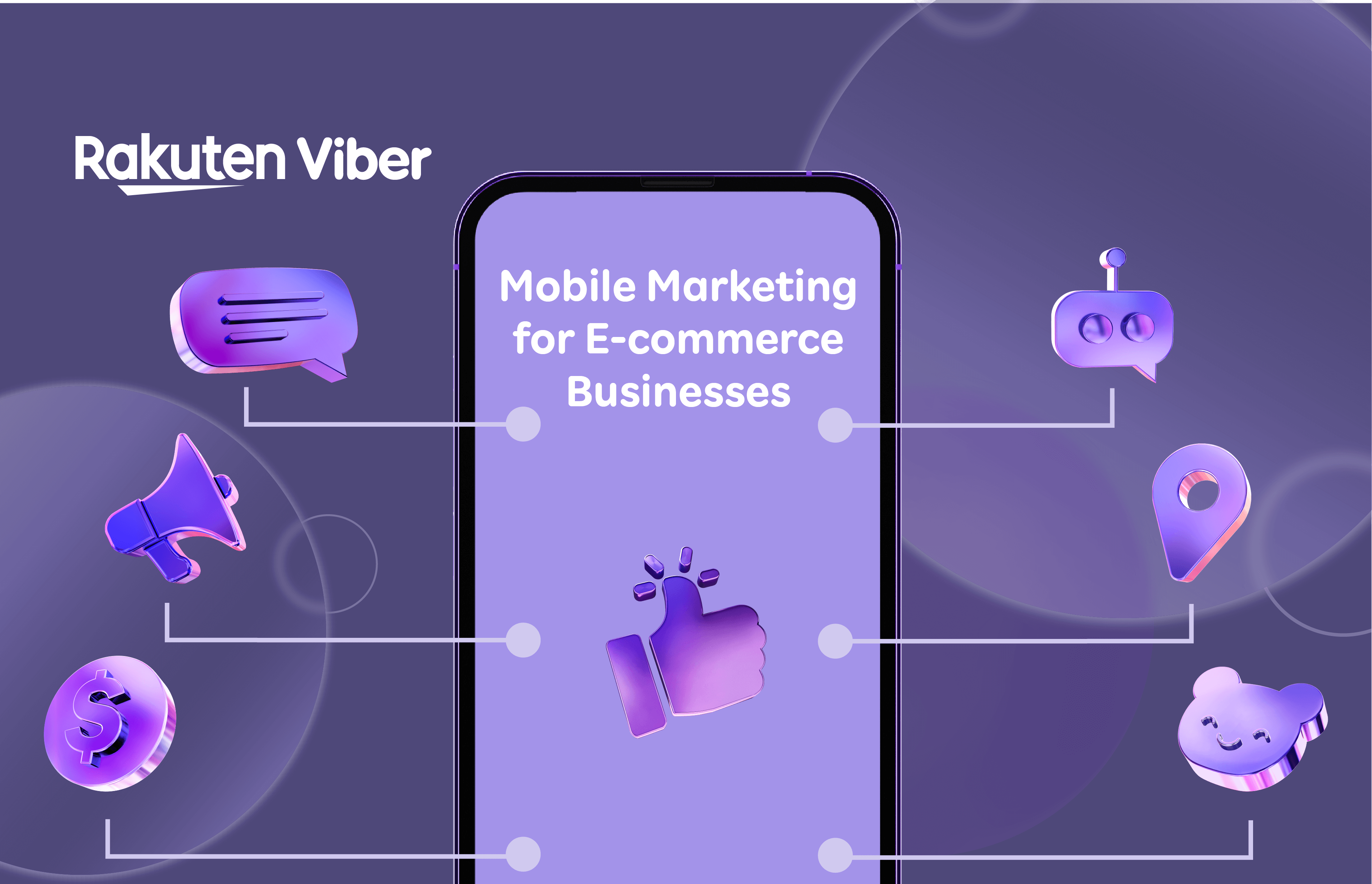The Essential Guide To Mobile Marketing For E-commerce Businesses

Table of Contents
Understanding Your Mobile Audience
Understanding how your customers interact with your brand on mobile devices is paramount for effective mobile marketing for e-commerce. This involves analyzing their behavior, understanding their preferences, and tailoring your strategies accordingly.
Analyzing Mobile User Behavior
Utilizing analytics tools is the cornerstone of understanding your mobile audience. Here's how:
- Utilize analytics tools: Leverage platforms like Google Analytics, Adobe Analytics, or similar to track key metrics. Focus on mobile-specific data, including:
- Bounce rate: The percentage of visitors who leave your site after viewing only one page. A high bounce rate suggests issues with mobile usability.
- Conversion rate: The percentage of visitors who complete a desired action, such as making a purchase. Track this specifically for mobile users.
- Average session duration: The average time spent on your site by mobile visitors. Longer sessions often indicate higher engagement.
- Mobile heatmaps: Visual representations of where users click and scroll on your mobile site, highlighting areas of interest and potential friction points.
- Identify popular devices and operating systems: Knowing which devices and operating systems your audience primarily uses allows you to optimize your website and campaigns for compatibility and optimal performance.
- Segment your audience: Categorize your mobile users based on their behavior (e.g., high-value customers, frequent browsers, cart abandoners). This allows for personalized messaging and targeted campaigns.
Mobile-First Indexing
Google's mobile-first indexing means your website's mobile version is the primary version Google uses to rank your site in search results. Ensuring your site is optimized is crucial for SEO success.
- Implement responsive web design: Your website should automatically adapt to different screen sizes and devices.
- Ensure fast loading speeds: Slow loading times on mobile are a major turnoff. Optimize images, minimize HTTP requests, and leverage browser caching. Tools like Google PageSpeed Insights can help you identify areas for improvement.
- Optimize images for mobile devices: Use appropriately sized images to reduce loading times and improve the overall mobile user experience. Compress images without sacrificing quality.
Optimizing Your E-commerce Website for Mobile
A seamless mobile experience is critical for converting mobile visitors into customers. This involves focusing on responsive design and a user-friendly interface.
Responsive Web Design
Responsive design ensures your website adapts flawlessly to various screen sizes and devices.
- Use a responsive design framework: Frameworks like Bootstrap or Foundation provide pre-built components and styles that simplify the process of creating a responsive website.
- Test your website's responsiveness: Use browser developer tools or online responsive design checkers to preview your website on different devices and screen sizes.
- Ensure accessibility: All elements—text, images, buttons, and forms—must be easily accessible and usable on mobile devices. Consider font sizes, button sizes, and touch targets.
Mobile User Experience (UX)
Prioritizing a positive mobile UX is crucial for engagement and conversions.
- Simplify navigation: Make it incredibly easy for users to find products, navigate categories, and access information.
- Optimize checkout processes: Streamline the checkout process to minimize steps and friction. Consider offering guest checkout options.
- Implement mobile-friendly payment gateways: Ensure you offer secure and easy-to-use payment options that are optimized for mobile devices.
- Ensure fast page loading speeds: A slow-loading website will frustrate mobile users and lead to high bounce rates. Use tools to analyze page load speed and identify areas for improvement.
Leveraging Mobile Marketing Channels
Beyond website optimization, utilizing various mobile marketing channels is essential to reach your target audience.
Mobile App Marketing
If you have a mobile app, effectively promoting it is vital.
- App Store Optimization (ASO): Optimize your app store listing with relevant keywords, compelling screenshots, and a clear description to improve visibility and downloads.
- In-app messaging and push notifications: Use these features to deliver targeted promotions, updates, and personalized messages directly to your app users.
- App install campaigns: Run mobile ad campaigns on social media platforms and search engines to drive app installs.
SMS Marketing
SMS marketing offers a direct line of communication with your customers.
- Compliance: Always ensure compliance with regulations like obtaining explicit opt-in consent before sending marketing messages.
- Personalization: Tailor your messages based on customer preferences and purchase history.
- Performance Tracking: Use analytics to track open rates, click-through rates, and conversions to measure campaign effectiveness.
Social Media Marketing
Social media platforms are crucial for mobile marketing.
- Mobile-optimized content: Create visually engaging content optimized for mobile viewing.
- Mobile-specific ad campaigns: Run targeted ad campaigns on platforms like Facebook, Instagram, and TikTok, leveraging their mobile ad targeting options.
- Engagement: Actively engage with your audience, responding promptly to comments and messages.
Measuring and Analyzing Your Mobile Marketing Results
Tracking and analyzing your results is crucial for continuous improvement.
Key Performance Indicators (KPIs)
Monitor key metrics to understand your mobile marketing success.
- Mobile conversion rates: Track the percentage of mobile visitors who complete desired actions (purchases, sign-ups, etc.).
- Mobile website traffic: Analyze the volume of traffic coming from mobile devices.
- Click-through rates (CTR) on mobile ads: Measure the effectiveness of your mobile advertising campaigns.
- Return on investment (ROI) for mobile campaigns: Calculate the return on investment for each mobile marketing campaign to assess profitability.
A/B Testing
A/B testing allows you to optimize your campaigns by testing different elements.
- Test various elements: Experiment with different ad creatives, landing pages, calls-to-action, and messaging to determine what resonates best with your mobile audience.
- Analyze results: Use analytics to compare the performance of different versions and iterate accordingly.
Conclusion
Mastering mobile marketing for e-commerce is critical for success in today's competitive landscape. By understanding your mobile audience, optimizing your website and app, leveraging diverse mobile channels, and meticulously analyzing your results, you can significantly boost your sales and brand awareness. Remember to continuously adapt your strategy based on performance data and emerging trends in mobile technology. Start implementing your effective mobile marketing strategy today and watch your e-commerce business flourish!

Featured Posts
-
 The Fsu And Clemson Settlement Four Factors Leading To Their Win
May 19, 2025
The Fsu And Clemson Settlement Four Factors Leading To Their Win
May 19, 2025 -
 De Soto Countys 100 Broadband A Model For Mississippi
May 19, 2025
De Soto Countys 100 Broadband A Model For Mississippi
May 19, 2025 -
 Rosy Apple Aphid Infestation Impact On Apple Production And Harvest Yields
May 19, 2025
Rosy Apple Aphid Infestation Impact On Apple Production And Harvest Yields
May 19, 2025 -
 Paige Bueckers Day Long Hometown Map Mystery Explained
May 19, 2025
Paige Bueckers Day Long Hometown Map Mystery Explained
May 19, 2025 -
 De Soto County First In The State With 100 Broadband Access
May 19, 2025
De Soto County First In The State With 100 Broadband Access
May 19, 2025
